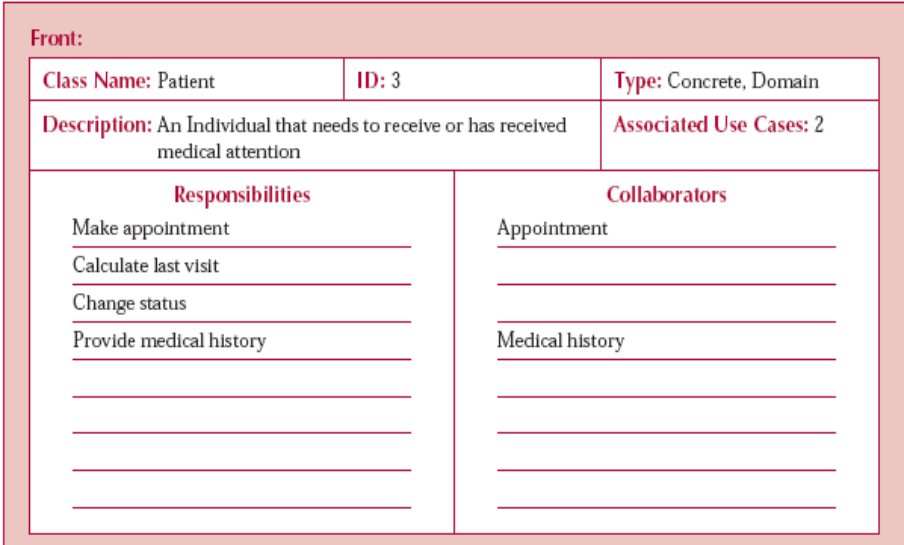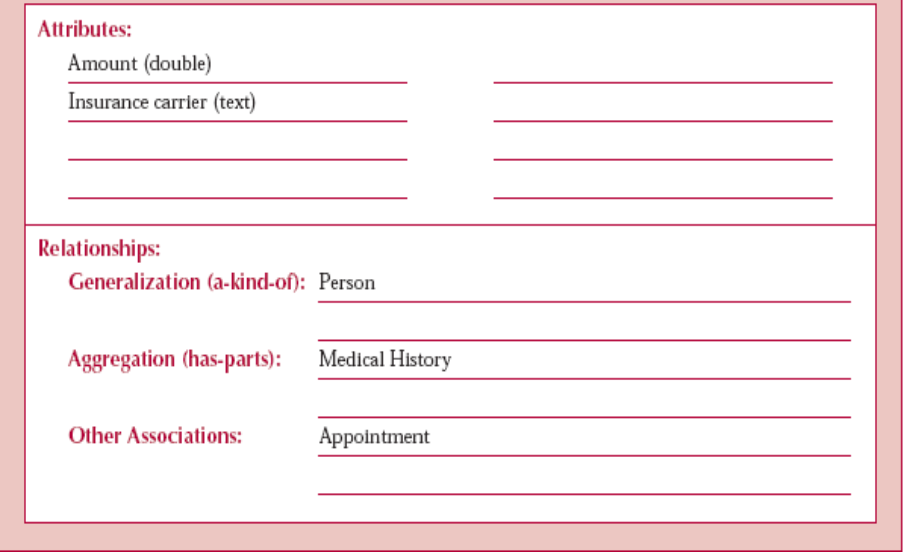CSC/ECE 517 Fall 2011/ch4 4i sd
"CRC Card Tools"
Introduction
CRC Cards
CRC Cards are the Class Responsibility Collaboration Cards which are used to interactively brainstorm an initial design of a program or a program segment. These are used as a tool used in the design on object oriented software.<ref name="crc">CRC Cards - Wikipedia</ref> CRC Cards were invented by Kent Back and Ward Cunningham in 1989.<ref name="paper"> Beck, Kent; Cunningham, Ward (October 1989), "A laboratory for teaching object oriented thinking", ACM SIGPLAN Notices (New York, NY, USA: ACM) 24 (10): 1–6, doi:10.1145/74878.74879, ISBN 0-89791-333-7</ref> It supports a rapid and thorough exploration of design alternatives. It is used during initial model construction as a brainstorming technique where it is used to determine which classes are needed and how they will interact among themselves, and again later to evaluate the design. Normally, it could be done by one person or may require up to five people.<ref name="alistair">CRC Cards</ref>
Description of CRC
The CRC cards are commonly created from index cards and they contain:
- Class - the name of the object-oriented class
- Responsibility - the responsibilities of the class
- Collaborator - the relationship the class has with other classes in order to collaborate and fulfil its responsibilities
To identify the name of the classes, we look for the nouns in the requirements document. The class should be a singular noun, does not really have the same functionality as some other class, and is not a primitive type.
Responsibility-driven modelling can be done using CRC cards. These could also be used to form object interaction diagram. Since these cards are small in size, they help reduce the complexity of the design to minimum. It focuses the designer on the essentials of the class and prevents her/him from getting into its details and inner workings at a time when such detail is probably counter-productive. It also forces the designer to refrain from giving the class too many responsibilities. Because the cards are portable, they can easily be laid out on a table and re-arranged while discussing a design with other people.
Example of a CRC Card
Here is an example of how a CRC Card looks.<ref name="dennis">Dennis, Wixom, Roth, "Systems Analysis and Design", 3rd Edition</ref>
- Front Side of a CRC Card
- Back Side of a CRC Card
CRC Card Tools
Conclusion
See Also
References
<references/>

